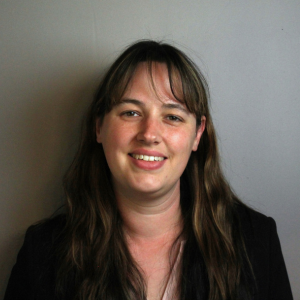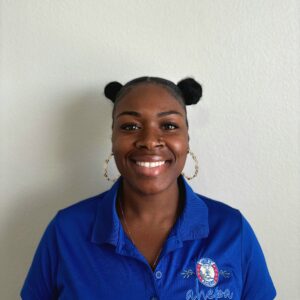Building a Better Hiring Experience: The Interview Process and Beyond
In part one of this series, we examined the importance of creating an ideal candidate journey during the hiring process, including solutions to common challenges. Here, we explore the interview process and how to use staff feedback and metrics to improve the overall journey.
How to Craft an Ideal Interview Process

Lisa Santucci, senior manager of talent acquisition at Five Star Senior Living
At Five Star Senior Living, interviews are structured so that staff can assess the candidate’s skills as well as their cultural fit. The process typically begins with a brief phone screening to discuss a candidate’s background and experience. The phone screening is followed by a more in-depth in-person or virtual interview. “During the interview, we ask a mix of behavioral and situational questions, focusing on how candidates have handled real-world scenarios, particularly those related to senior care, teamwork, and customer service,” says Lisa Santucci, senior manager of talent acquisition at Five Star Senior Living. “We also give candidates the opportunity to ask questions, ensuring the conversation is two-way. Additionally, we assess soft skills like empathy, communication, and problem-solving, which are critical in senior living settings.”
Jill McGroarty, vice president of human resources at Maplewood Senior Living, describes a similar process that starts with a phone screening to assess a candidate’s qualifications and alignments with the community’s values. “Next, we conduct behavioral-based interviews to evaluate how candidates have handled situations in the past, ensuring they have the skills and approach needed for the role,” she explains. “Finally, we offer shadow days to give candidates a firsthand look at the job and assess their fit with the team and community.”

Jill McGroarty, Director of Human Resources at Maplewood Senior Living
The community uses behavioral assessment tools to gain greater insight into a candidate’s natural behavioral drives and needs when hiring for leadership positions. “This assessment helps us predict how individuals will behave in various situations, which provides insight into their personality traits and leadership potential,” McGroarty says.
She notes that a meet and greet final approval session with the Executive Director is also a best practice. This final meeting ensures that the Executive Director endorses the candidate the hiring team has chosen.
Aaron Marcum, founder at Breakaway365, advocates for carefully choosing questions to gauge a candidate’s alignment with the community. “I cannot overstate the importance of asking questions of candidates that get to the root of their own personal purpose, to ensure it is aligned with the company’s,” he says. “Simon Sinek, author of Start With Why, calls this mapping the journey from their point of view. Get to know what makes them tick and why early on, and if it aligns with the company’s mission and values.”
How to Encourage Candidate Questions

Aaron Marcum, founder at Breakaway365
Five Star Senior Living works to create an open and transparent hiring process, so candidates are comfortable asking questions. “From the very beginning, we set the tone by encouraging candidates to ask questions during the initial phone screening and throughout each stage of the interview process,” Santucci explains. “We also allocate dedicated time at the end of every interview for them to address any concerns or curiosities.” Candidates receive clear information about the role, team, and company culture, and are encouraged to reach out to the Talent Acquisition team at any time with follow-up questions.
McGroarty highlights the importance of maintaining open communication throughout the hiring process, ensuring candidates get the information they need. Candidates are encouraged to ask any questions during interviews and phone screenings, and receive contact information for follow-ups. “Our website also provides easy to click links to more information about our benefits, culture, and other opportunities,” she says.
Tips for Using Staff Feedback
Staff feedback can be a valuable tool in improving the candidate journey, but communities need to be strategic in how they gather it. Marcum uses staff feedback to improve the hiring process, but only asks for feedback after staff trust the community. “Often, team members won’t give feedback until they know you’ll listen,” he says. “Our best feedback on our hiring processes has come from current staff, who reflect back on their experience. One leadership team member recently filled out a detailed analysis of what she would like to see changed based on her own hiring process.”

Cynthia Primm, chief human resources officer at One Senior Care
According to Cynthia Primm, chief human resources officer at One Senior Care, feedback is central to the organization’s hiring process. The One Senior Care HR team follows each employee during their first 90 days and sends surveys at the completion of orientation and 30, 60, and 90 days of employment.
“This long-term pathway for feedback is critical,” says Primm. “While a new employee might not want to provide feedback on day one, they may be more comfortable doing so on day 90.” She says the hiring team enjoys receiving feedback so they can make the process stronger. “Our survey tool provides trend analysis and recommended improvement actions, which make this practice invaluable,” she explains.
Maplewood Senior Living always asks staff for feedback on the hiring process through surveys and one-on-one conversation. “Based on candidate feedback, we’ve implemented several improvements, such as adding a texting feature to streamline communication, partnering with new pre-employment physical providers with reduced wait times, and offering flexible options that allow candidates to complete steps at their convenience,” says McGroarty.
The Value of Metrics
For Maplewood Senior Living, metrics also shape the hiring process. The community calculates monthly hiring metrics like time-to-hire, time-to-fill, and time-to-start. “By tracking these metrics, we can pinpoint delays between the offer acceptance and the candidate’s first day, allowing us to streamline the transition process,” says McGroarty. “This data helps us identify areas for improvement, optimize our applicant tracking system, and ensure a faster, more efficient hiring experience for both the organization and the candidates.”
Shaping the Candidate Journey
The hiring process is about more than finding the candidate who’s the right fit for the job. It also plays an important role in shaping long-term staff retention and influencing how candidates perceive your organization and its culture, making it essential to invest in designing a thoughtful and engaging candidate journey. “Do not underestimate the power of early connection with candidates,” says Marcum. “How you hire and onboard, from the perspective of your candidates and new employees, is how they envision you will treat them six months later and beyond.”

Paige Cerulli is a contributing writer to i Advance Senior Care.
Related Articles
Topics: Featured Articles











